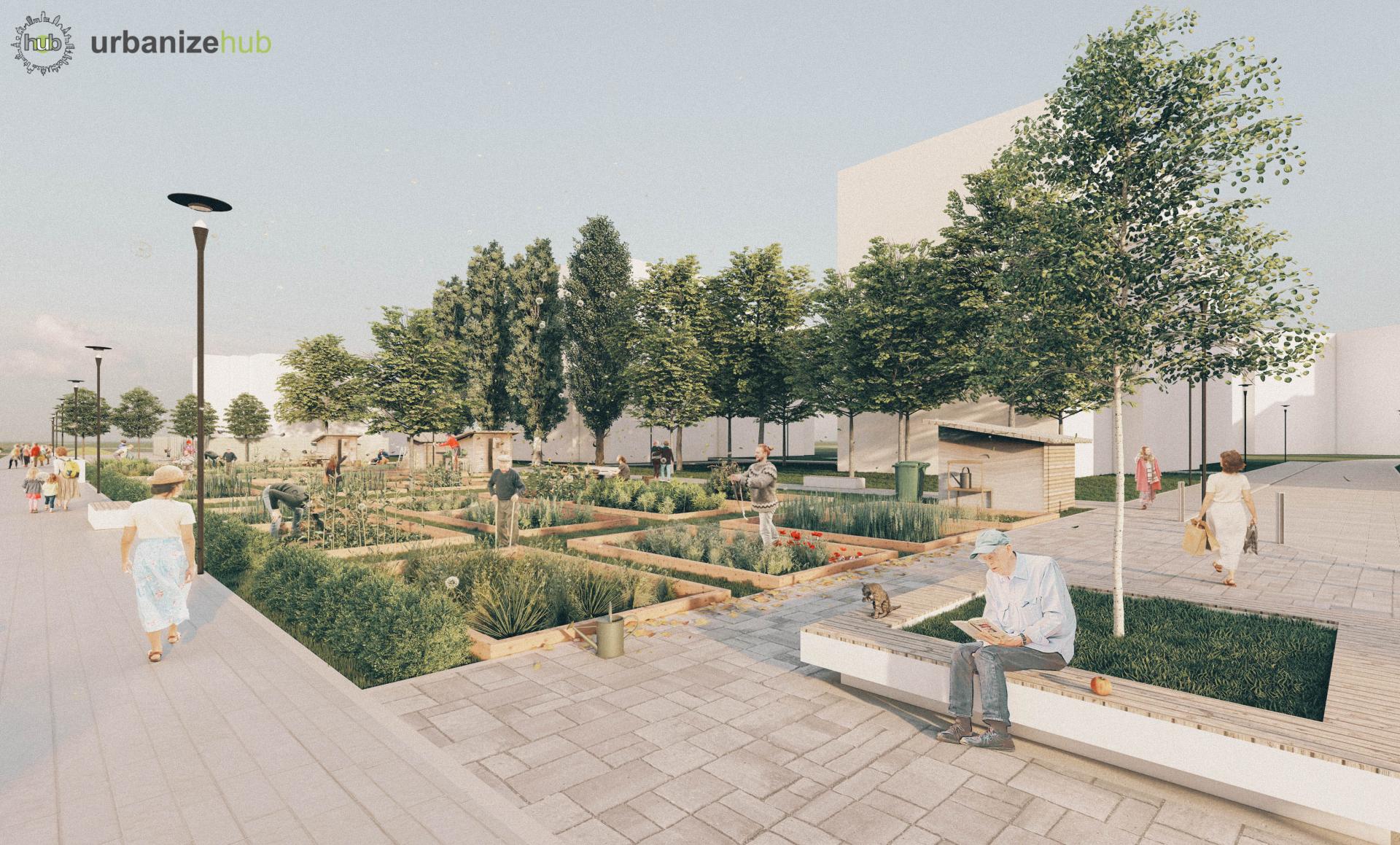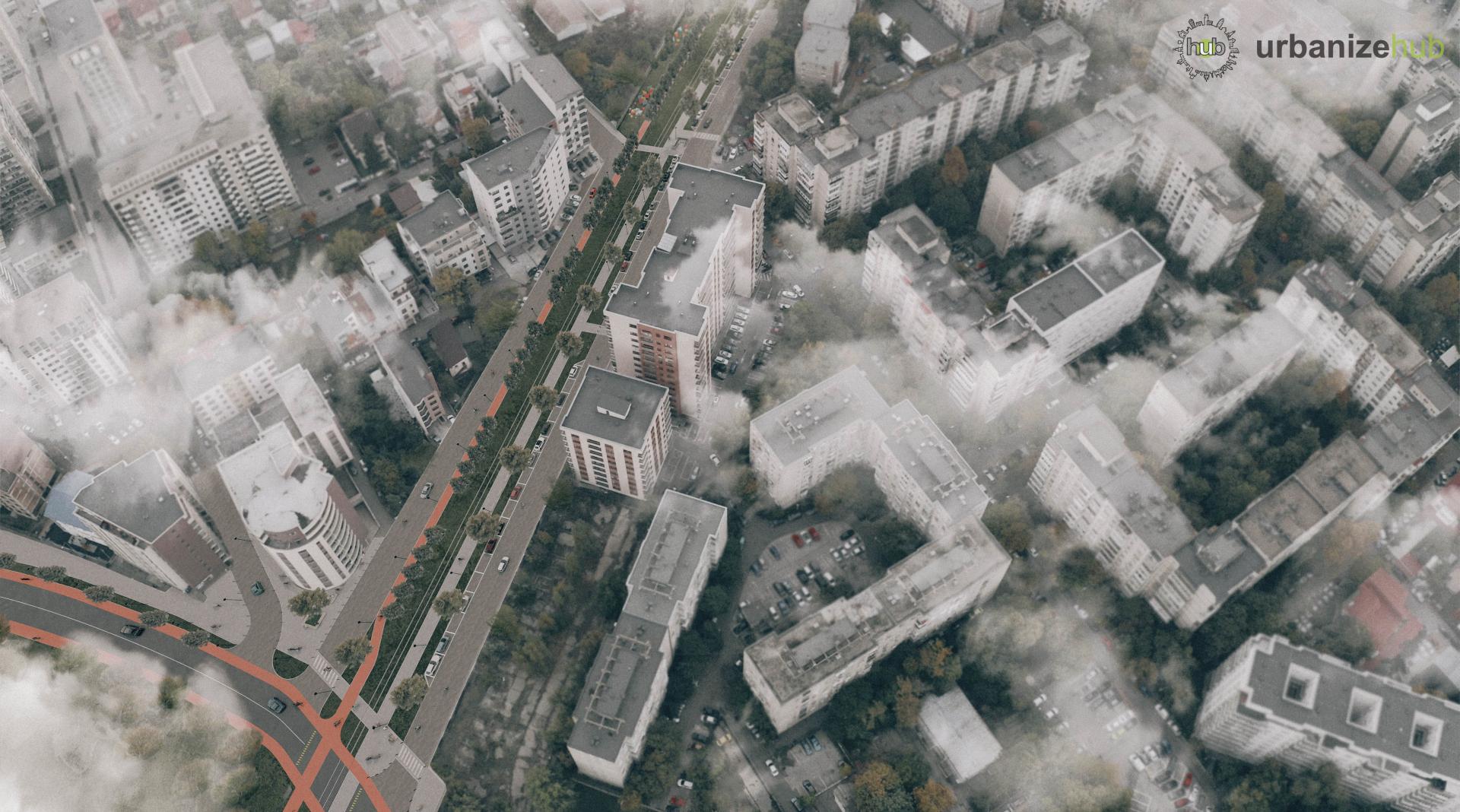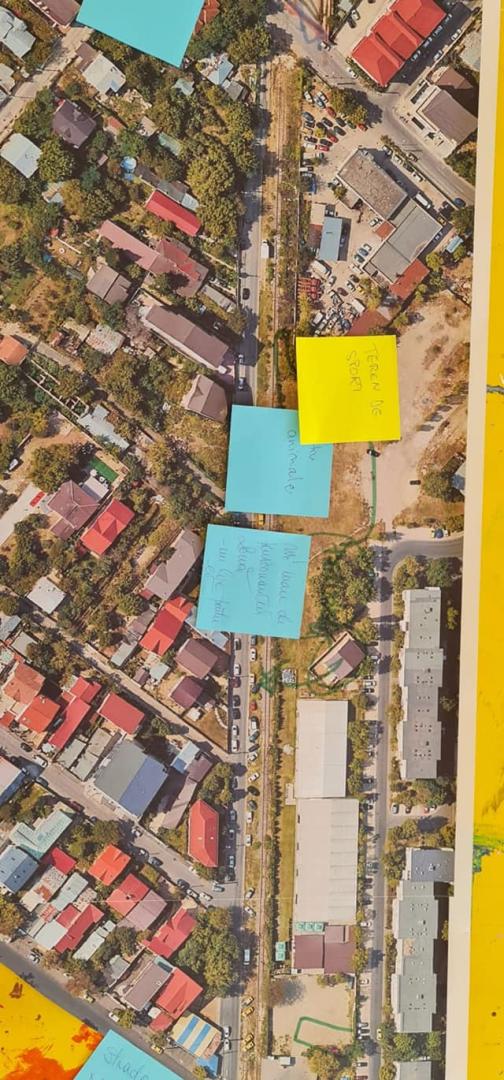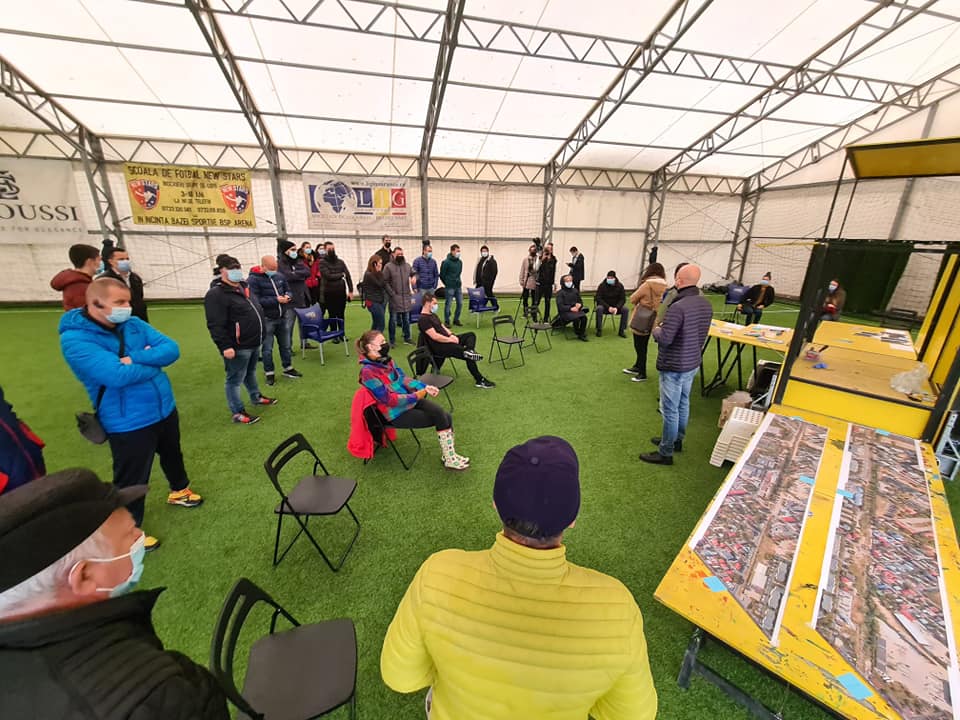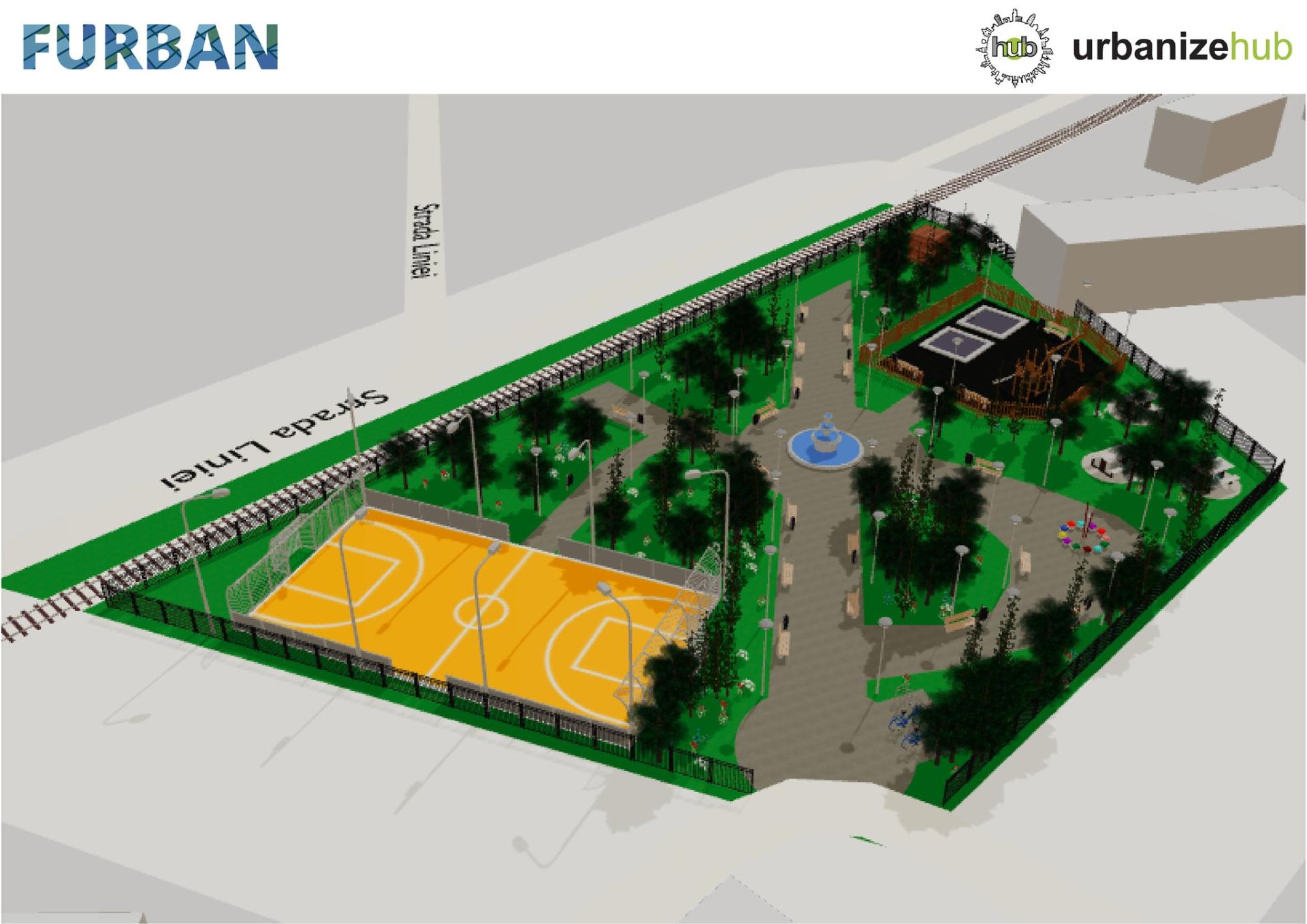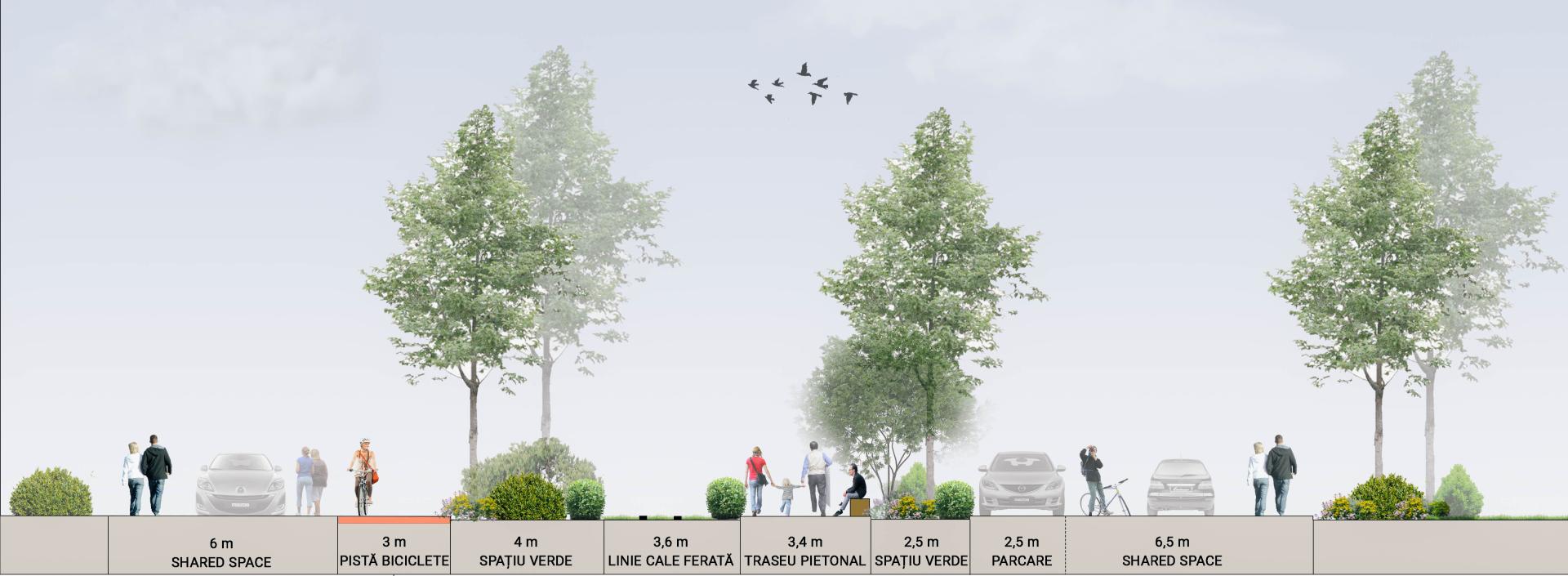The "Line" Project
Basic information
Project Title
Category
Project Description
The "Line" project entailed (in a nutshell) multi-criteria analyses, which laid the groundwork for the planning proposal, a chapter dedicated to case studies, with examples of similar projects, analysed and prioritised according to applicability, observations, interviews and public consultations that generated an effective planning solution validated by the end users, the citizens. The resulting landscape concept will be used as a guideline for future development.
Geographical Scope
Project Region
Urban or rural issues
Physical or other transformations
EU Programme or fund
Which funds
Description of the project
Summary
The "Liniei" project will shape the public space adjacent to Liniei Street in Militari district, Bucharest, through co-design and participatory urbanism techniques. The project is represented as a development engine for the area under study, but also as an opportunity at local and municipal level. Liniei Street is a potential axis of development but its multivalent character raises many challenges. The neglected industrial area, the abandoned railway line, the spontaneous vegetation and the accelerated real estate developments are only some of the challenges that this area poses. The distinctive qualities on which the project relies are the existing railway infrastructure, the biodiversity developed in the ruderal vegetation, the city location and the presence of undeveloped land, seen as a resource for urban development. In an urban area where the area of green spaces is reduced, the motorization index is increasing due to uncontrolled real estate development and the offer of leisure spaces is not varied, the "Line Project" merges as a vector to increase the quality of life. The urban restructuring of Liniei Street implies a functional, spatial and social reconfiguration, giving back to the inhabitants a space that is currently residual. Transforming the area into a collection of connected public spaces, preserving components of identity such as the railway lines and exploiting them artistically and functionally would increase the attractiveness of the investment. The proposal aims at a sustainable approach to development, in line with the principles of sustainable development by creating a linear park that accompanies the railway line forming a green axis of entry to the city on the west-east direction. The main objectives of the project are to facilitate non-motorised mobility, increase the safety of the area, improve the urban image as well as ameliorate the effects of physical and noise pollution.
Key objectives for sustainability
One of the main challenges for the next decade is to create a safe, inclusive, resilient and sustainable urban environment. Actions that can promote such a future include citizen participation in urban planning decisions, developing safe and accessible alternative transport systems, increasing resilience to natural disasters and ensuring accessibility to green spaces.
The project contributes to climate change mitigation and adaptation as the implementation of the proposed measures will reduce greenhouse gas emissions as a result of the shift from car use to walking or the use of alternative means of transport (public passenger transport, cycling), in particular the sustainable development of the 6th district and its adjacent area.
Vegetation plays an essential role when talking about the sustainable development of an area. Starting from that of improving the quality of the environment, it also has a significant impact on other levels. Nature brings numerous benefits to people and the built environment, contributing to: reducing air pollution, the greenhouse effect and noise pollution, reducing stress and maintaining well-being, the emotional development of children and people's health in general. At the same time, nature in the city contributes to making the urban environment more attractive and promoting social cohesion.
This land, as well as the railway line, is an opportunity for Sector 6 from an ecological (as a 3 km long green corridor with high biodiversity), civic (as a proof of community activism), historical (as a conservation and modernisation project, transforming an abandoned railway line into a new public space) point of view, social (both at the neighbourhood level and as a linear park - at the city level, where families, the community and even tourists meet and socialise) and economic (as a project that has the potential to generate income, attract business and stimulate local economic growth).
Key objectives for aesthetics and quality
In order to effectively address the dysfunctions identified in the analysis phase and following the results of the socio-anthropological study, we proposed public spaces of relatively equal size, outlined in thematic modules with various activities: sport, culture, recreation, contemplation and socialization. These modules can be multiplied and connected to each other, like a jigsaw puzzle, to offer different scenarios for mobilizing public spaces.
Access to the green corridor will be non-motorised and will have themed areas. The main function will be green space but secondary functions such as commercial and cultural can also be inserted. These will encourage economic growth in the area and activate the study area segment.
One of the priority strategic directions for the development of Sector 6 is the creation of a clean environment, urban regeneration and quality housing.
Another goal is also to develop recreational infrastructure, relaxation and leisure areas in order to attract and keep the inhabitants of Sector 6 within the administrative boundaries.
The successful implementation of the project will lead to the revitalisation of the sports activity in Sector 6, as well as to the economic, leisure and even sports viability / modernisation and development of the area adjacent to Line Street.
As a result of the implementation of the investment, the following results are expected:
- Urban restructuring of an area with diverse functions, currently unintegrated and uncorrelated urbanistically, including through the emergence of new facilities and public space improvements;
- Redefinition of the functional character of the whole area by increasing the urban leisure functions, with emphasis on the quality of the offer of public spaces;
- Expansion of green areas and development of sports areas, integrated into the public park, with facilities for performance and amateur sports;
Key objectives for inclusion
The "Liniei" project will shape the public space adjacent to Liniei Street in Militari district, Bucharest, through co-design and participatory urbanism techniques. The project is represented as a development engine for the area under study, but also as an opportunity at local and municipal level. Liniei Street is a potential axis of development but its multivalent character raises many challenges. The neglected industrial area, the abandoned railway line, the spontaneous vegetation and the accelerated real estate developments are only some of the challenges that this area poses. The distinctive qualities on which the project relies are the existing railway infrastructure, the biodiversity developed in the ruderal vegetation, the city location and the presence of undeveloped land, seen as a resource for urban development. In an urban area where the area of green spaces is reduced, the motorization index is increasing due to uncontrolled real estate development and the offer of leisure spaces is not varied, the "Line Project" merges as a vector to increase the quality of life. The urban restructuring of Liniei Street implies a functional, spatial and social reconfiguration, giving back to the inhabitants a space that is currently residual. Transforming the area into a collection of connected public spaces, preserving components of identity such as the railway lines and exploiting them artistically and functionally would increase the attractiveness of the investment. The proposal aims at a sustainable approach to development, in line with the principles of sustainable development by creating a linear park that accompanies the railway line forming a green axis of entry to the city on the west-east direction. The main objectives of the project are to facilitate non-motorised mobility, increase the safety of the area, improve the urban image as well as ameliorate the effects of physical and noise pollution.
Results in relation to category
The "Liniei" project will shape the public space adjacent to Liniei Street in Militari district, Bucharest, through co-design and participatory urbanism techniques. The project is represented as a development engine for the area under study, but also as an opportunity at local and municipal level. Liniei Street is a potential axis of development but its multivalent character raises many challenges. The neglected industrial area, the abandoned railway line, the spontaneous vegetation and the accelerated real estate developments are only some of the challenges that this area poses. The distinctive qualities on which the project relies are the existing railway infrastructure, the biodiversity developed in the ruderal vegetation, the city location and the presence of undeveloped land, seen as a resource for urban development. In an urban area where the area of green spaces is reduced, the motorization index is increasing due to uncontrolled real estate development and the offer of leisure spaces is not varied, the "Line Project" merges as a vector to increase the quality of life. The urban restructuring of Liniei Street implies a functional, spatial and social reconfiguration, giving back to the inhabitants a space that is currently residual. Transforming the area into a collection of connected public spaces, preserving components of identity such as the railway lines and exploiting them artistically and functionally would increase the attractiveness of the investment. The proposal aims at a sustainable approach to development, in line with the principles of sustainable development by creating a linear park that accompanies the railway line forming a green axis of entry to the city on the west-east direction. The main objectives of the project are to facilitate non-motorised mobility, increase the safety of the area, improve the urban image as well as ameliorate the effects of physical and noise pollution.
How Citizens benefit
The Line Project community has gathered over 20,000 people in 2 months who have seen a piece of content from the Facebook page.
In total, adding up the participants of all the stages, around 4000 people who live, work or transit the targeted area have actively participated in this project.
In the first questionnaire, 3257 responses were validated, of which 41% were women and 59% men. The age range of those who completed the survey is between 15 and 76 years. In terms of education and place of work there is an over-representation of those with higher education and those employed in the private sector.
The second questionnaire was completed by 136 respondents, whose socio-demographic data are similar to the first questionnaire.
In addition to the two questionnaires, part of the respondents to the first questionnaire were interviewed by telephone and a focus group of 5 people was organised.
Informal on-site discussions with local residents also took place during the field observations.
About 40 people participated in the public consultation held on 16 October at the BSP Arena - Sector 6.
The Line Project team organised an internal consultation meeting with representatives from local government, civil society and academia on 15 October 2021. The aim of the discussion was to know the intentions and vision of the Municipality of Sector 6 regarding the Lineia Street area and to listen to the opinions and suggestions of specialists in order to implement them in the planning proposals. For a transparent approach, the meeting was recorded, uploaded to YouTube and presented on the event's Facebook page.
Physical or other transformations
Innovative character
The "Liniei" project will shape the public space adjacent to Liniei Street in Militari district, Bucharest, through co-design and participatory urbanism techniques. The project is represented as a development engine for the area under study, but also as an opportunity at local and municipal level. Liniei Street is a potential axis of development but its multivalent character raises many challenges. The neglected industrial area, the abandoned railway line, the spontaneous vegetation and the accelerated real estate developments are only some of the challenges that this area poses. The distinctive qualities on which the project relies are the existing railway infrastructure, the biodiversity developed in the ruderal vegetation, the city location and the presence of undeveloped land, seen as a resource for urban development. In an urban area where the area of green spaces is reduced, the motorization index is increasing due to uncontrolled real estate development and the offer of leisure spaces is not varied, the "Line Project" merges as a vector to increase the quality of life. The urban restructuring of Liniei Street implies a functional, spatial and social reconfiguration, giving back to the inhabitants a space that is currently residual. Transforming the area into a collection of connected public spaces, preserving components of identity such as the railway lines and exploiting them artistically and functionally would increase the attractiveness of the investment. The proposal aims at a sustainable approach to development, in line with the principles of sustainable development by creating a linear park that accompanies the railway line forming a green axis of entry to the city on the west-east direction. The main objectives of the project are to facilitate non-motorised mobility, increase the safety of the area, improve the urban image as well as ameliorate the effects of physical and noise pollution.
Learning transferred to other parties
The "Liniei" project will shape the public space adjacent to Liniei Street in Militari district, Bucharest, through co-design and participatory urbanism techniques. The project is represented as a development engine for the area under study, but also as an opportunity at local and municipal level. Liniei Street is a potential axis of development but its multivalent character raises many challenges. The neglected industrial area, the abandoned railway line, the spontaneous vegetation and the accelerated real estate developments are only some of the challenges that this area poses. The distinctive qualities on which the project relies are the existing railway infrastructure, the biodiversity developed in the ruderal vegetation, the city location and the presence of undeveloped land, seen as a resource for urban development. In an urban area where the area of green spaces is reduced, the motorization index is increasing due to uncontrolled real estate development and the offer of leisure spaces is not varied, the "Line Project" merges as a vector to increase the quality of life. The urban restructuring of Liniei Street implies a functional, spatial and social reconfiguration, giving back to the inhabitants a space that is currently residual. Transforming the area into a collection of connected public spaces, preserving components of identity such as the railway lines and exploiting them artistically and functionally would increase the attractiveness of the investment. The proposal aims at a sustainable approach to development, in line with the principles of sustainable development by creating a linear park that accompanies the railway line forming a green axis of entry to the city on the west-east direction. The main objectives of the project are to facilitate non-motorised mobility, increase the safety of the area, improve the urban image as well as ameliorate the effects of physical and noise pollution.

